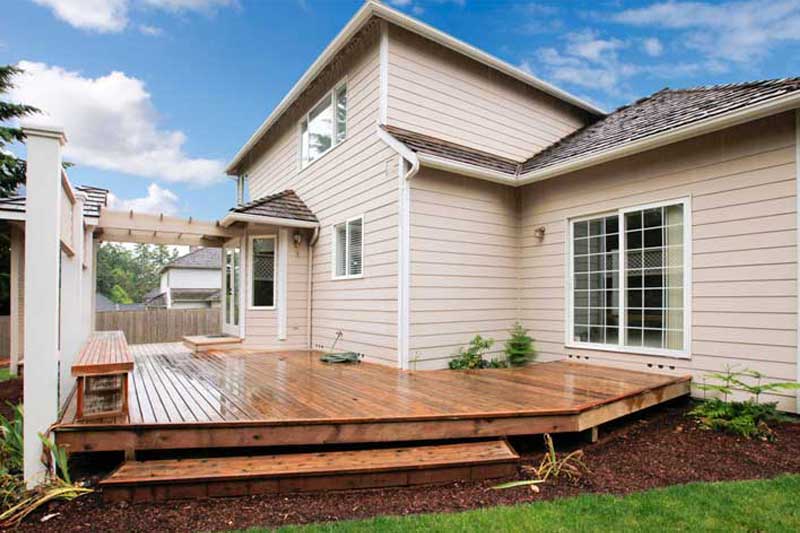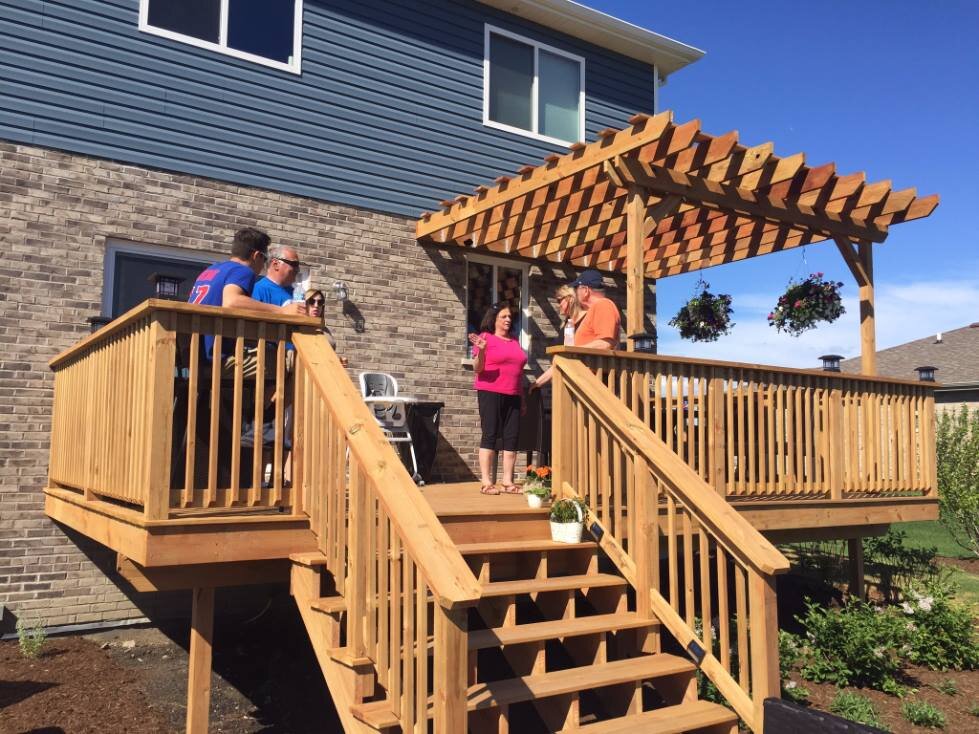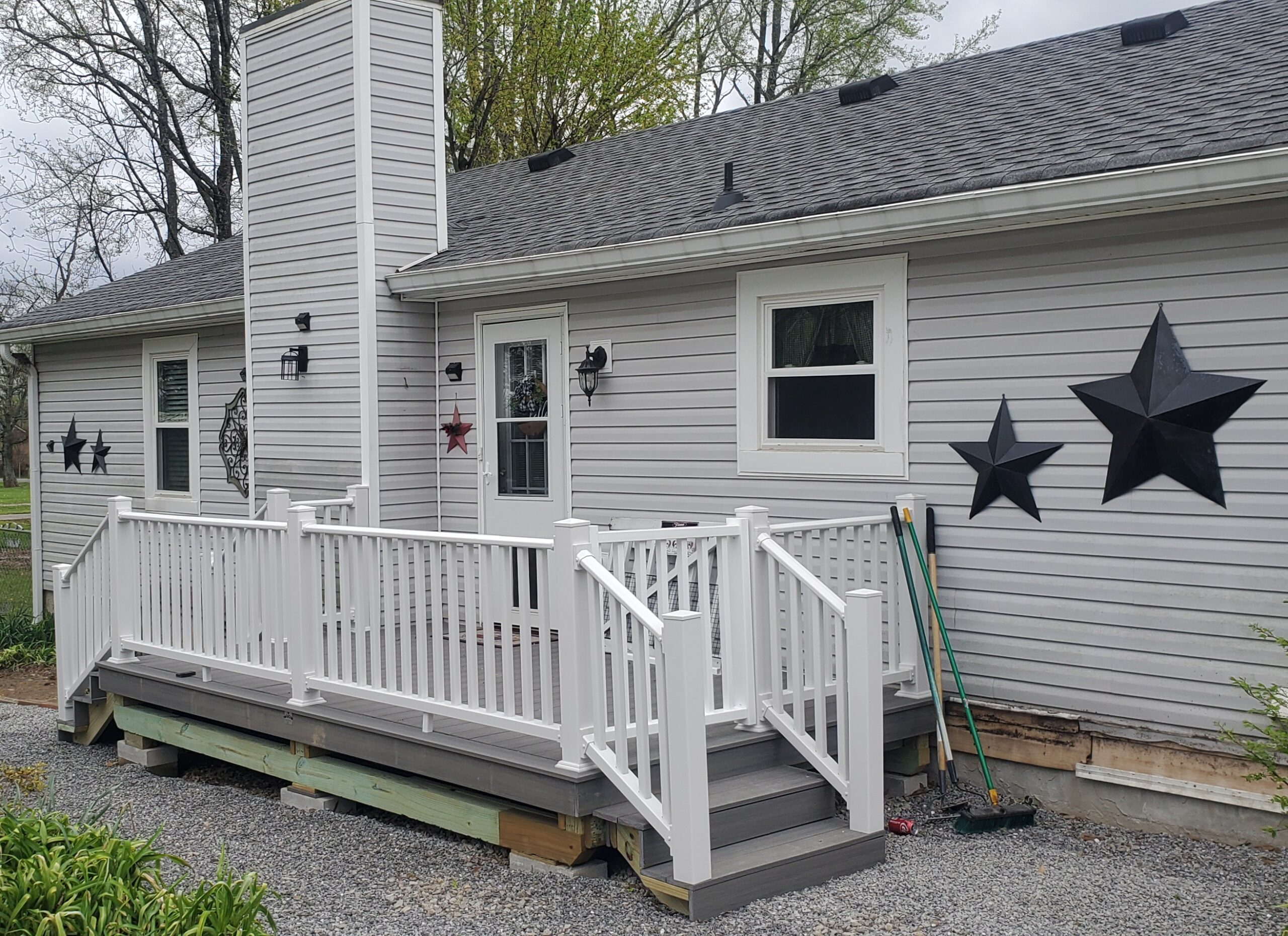A Step-by-Step Strategy to Effective Deck Installation for Homeowners
When it comes to setting up a deck, careful planning is crucial. Begin by evaluating your area and establishing clear goals. Recognizing exactly how to design your deck format can make all the distinction in maximizing your outdoor area.
Assessing Your Room and Establishing Objectives
Just how do you picture your ideal deck? Take measurements to comprehend how much room you have actually obtained to work with. Think concerning how you want to make use of the deck: will it be a relaxing resort, an event spot for close friends, or a place for family members meals?
Next, set particular objectives. Do you wish to integrate seating, a grill, or maybe planters? Picture the flow of motion and confirm it enhances your home's architecture. Prioritize performance, but don't fail to remember aesthetic appeals. Create a checklist of must-haves and nice-to-haves. This clearness will assist your choices and simplify the planning process. By reviewing your area and setting clear goals, you'll lay the structure for a deck that meets your needs perfectly.
Choosing the Right Materials
With your goals and area laid out, it's time to choose the right materials for your deck. If you live in an area with hefty rainfall or humidity, opt for materials resistant to moisture, like composite decking or pressure-treated wood.
Next, think regarding your budget plan. Composite materials can be more expensive upfront yet often last longer and require less upkeep. If you get on a tighter spending plan, treated lumber is budget-friendly and extensively available, however it may need normal maintenance.
Finally, do not ignore appearances. Select shades and appearances that complement your home and landscape. By meticulously picking your products based upon these factors, you'll ensure your deck not only satisfies your needs yet likewise improves your outside room.
Creating Your Deck Design
Creating a well-balanced deck format is important for making the most of both performance and satisfaction. Beginning by considering just how you intend to make use of the area. Do you imagine organizing big celebrations or looking for a comfortable place for relaxation? This will certainly lead your design.
Procedure your yard to ensure your deck fits harmoniously within the landscape. Consider flow and accessibility; it's vital to create paths that make activity easy. If you're including furnishings, illustration a design that suits seating, tables, and any kind of extra functions like planters or a fire pit.
Also, think about the sunlight and color patterns throughout the day. Positioning your deck to record sunlight during cooler months can boost its functionality. Ultimately, don't forget personal privacy-- integrating displays or landscaping can assist develop a more intimate setup. With mindful planning, your deck design will not just offer your needs however additionally raise your exterior experience.
Acquiring Required Permits
Before you begin developing your deck, it's vital to examine local regulations and acquire the needed permits. Each area has certain policies regulating deck construction, including dimension, height, and materials - composite deck builders austin tx near me. Beginning by visiting your regional structure department or their internet site to gather information on what's called for
You'll likely need to fill out an authorization application and give comprehensive prepare for your deck, consisting of dimensions and materials. Don't fail to remember to examine if any zoning regulations or home owner organization guidelines use to your building, as they could enforce added constraints.
As soon as you send your application, the review process can require time, so strategy ahead. If your task doesn't meet regional codes, you see this might require to change your plans, which can postpone your installment. By protecting the required authorizations first, you assure that your deck job remains on track and abide by all regulations.
Preparing the Ground and Structure
Preparing the ground and foundation for your deck is crucial for ensuring security and long life. Beginning by choosing the right area-- preferably, a level location that drains well. Clear the site of any kind of particles, greenery, or rocks. Next, note the summary of your deck utilizing risks and string to visualize the area.
As soon as you've specified the area, dig down to eliminate the topsoil, getting to a deepness of regarding 6 inches. This assists stop moisture buildup and rot. If you're utilizing concrete footings, dig openings where your articles will certainly go, a minimum of 12 inches deep to reach secure soil.
Take into consideration adding crushed rock to the base of these openings for drainage. Compact the soil to produce a strong base, and check for degree with a long board or level device. By taking these actions, you'll establish a solid foundation that supports your deck for many years to come.
Developing the Deck Structure

Once the frame remains in place, add joists, spaced evenly for appropriate assistance. You can use joist hangers for a protected fit. Don't forget to confirm that every little thing is level and square as you go. This framework is essential for the sturdiness of your deck, so take your article time and confirm each component is appropriately installed. With your deck structure developed, you're one step better to enjoying your brand-new outside sanctuary!
Adding Ending Up Touches and Upkeep Tips
Since your deck is developed, it's time to focus on the ending up touches and upkeep. Picking the ideal stain can boost its appearance, while regular cleansing keeps it looking fresh. Don't forget to adhere to a seasonal upkeep checklist to guarantee your deck remains in fantastic shape year-round.
Choosing Deck Discoloration Options
Exactly how do you pick the appropriate stain for your deck? Begin by evaluating the kind of timber. Various woods absorb stains try this differently, so check compatibility.

Regular Cleansing Strategies

Seasonal Upkeep Checklist
A well-maintained deck can change your outdoor space right into a spectacular hideaway, so it's critical to comply with a seasonal upkeep checklist. Begin each springtime by examining for any damage, such as loose boards or rusting fasteners. Tidy the surface area completely, getting rid of dust and debris. When completely dry, use a safety sealant to defend against moisture and UV rays.
In summer, look for mold or mildew and address it promptly. Keep the deck devoid of mess and check for indicators of wear.
As fall approaches, clear fallen leaves and debris to stop wetness build-up. Tighten up any type of loosened screws.
Lastly, during winter, validate that snow and ice are gotten rid of to prevent structural damage. Regular focus to these tasks maintains your deck looking terrific year-round!
Regularly Asked Concerns
The length of time Does a Typical Deck Setup Take?
A normal deck setup can take anywhere from a couple of days to a pair of weeks, depending on size, materials, and weather. You'll desire to prepare as necessary to guarantee everything goes efficiently and effectively.
Can I Mount a Deck on Uneven Ground?
Yes, you can set up a deck on uneven ground. You'll require to level the area, use flexible article supports, or consider constructing a multi-level deck to accommodate the incline and assurance security.
What Devices Do I Need for Deck Installment?
You'll require a couple of important tools for deck installment: a measuring tape, degree, saw, drill, hammer, and screws. Do not fail to remember security equipment like gloves and safety glasses to maintain yourself shielded while working.
Just how Do I Ensure My Deck Is Safe and Sturdy?
To assure your deck's safe and durable, regularly check for loose boards, safe barriers, and appropriate assistance. Usage quality products, adhere to building regulations, and take into consideration specialist inspections to preserve its honesty in time.
What Prevail Mistakes to Avoid Throughout Installation?
When installing a deck, stay clear of usual mistakes like improper dimensions, neglecting authorizations, utilizing low-grade materials, or missing the progressing process. These oversights can compromise safety and security and sturdiness, so pay attention to information throughout the job.